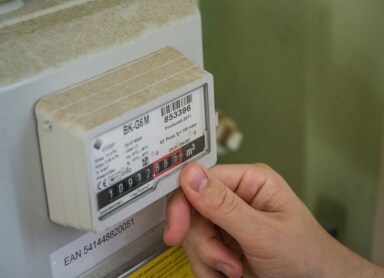Green certificates in the office – how to obtain them and what benefits they bring to a company
Eco-friendly construction is becoming increasingly popular among businesses. Having green certificates in the office is not only a way to meet ESG requirements but also proof that a company is a conscious and responsible market participant. So how can you apply for green certificates?
Green Certificate – What It Is and Why It’s Worth Having
The term green certificate can be understood in two ways. On one hand, it refers to a reward system for businesses that produce energy from renewable sources and sell it on the Power Exchange, trading in green certificates. More commonly, however, it refers to building certification systems, such as BREEAM, LEED, and WELL, which confirm that a given facility is developed in an environmentally sustainable way.
Green certificates for offices – who can obtain them?
The certification process evaluates various criteria demonstrating that a building supports environmental cleanliness, biodiversity, and natural resource protection. Any entity that completes the certification process can apply for a green certificate.
It doesn’t matter what industry your organization operates in—if you must (or wish to) meet ESG criteria, green certification is an excellent step in that direction. It helps your company stand out from the competition and adds value by positioning it as modern, eco-friendly, and responsible. In many industries, this is becoming a business requirement—for example, under Germany’s Supply Chain Due Diligence Act or in the automotive sector, where major manufacturers require suppliers (up to three tiers deep in the supply chain) to meet specific sustainability standards.
If we look at green certificates in a narrower sense—only as securities confirming the production of green energy—then any company registered on the Polish Power Exchange can apply for them. The scale of renewable energy production doesn’t matter; both small PV installations and large solar farms qualify.
According to available data, the implementation of green building certificates in Poland remains limited. In 2018, fewer than 500 buildings held BREEAM certification and under 150 had LEED certification. There’s still a long way to go—but this gives your company a chance to stand out.
Green buildings and green offices – what makes them special?
The classification of a building or office as “green” is a broad concept, and companies can adopt eco-friendly practices in many ways. The key is to create a facility that efficiently manages resources throughout its entire life cycle.
For example, by using eco-friendly building materials with strong insulation properties, you can create a passive building that minimizes electricity and water use while enabling efficient thermal energy management. Green buildings also integrate renewable energy sources such as wind turbines, heat pumps, photovoltaic panels, or solar collectors. Typically, they include a Smart Building System for effective energy management.
Proper building management not only reduces maintenance costs but also enhances user comfort. Clean air, bright spaces, and natural light create a pleasant environment that improves employee well-being and productivity.
A green building also considers its surroundings. Incorporating greenery, terraces, or balconies—combined with energy efficiency—makes the facility not only low-emission but even contributes to improving environmental quality.
How to obtain a green certificate for an office – step by step
The exact requirements for obtaining certification depend on the chosen system. For instance, BREEAM evaluates multiple categories, including:
- Management
- Water
- Energy
- Transport
- Health and well-being
- Resources
- Land use and ecology
- Pollution
- Materials
- Waste
- Innovation
Each category is rated on a scale from 0 to 6, with higher scores indicating better quality. Generally, any business can apply for certification by working with a qualified consultant who acts as an intermediary between the certifying body and the investor.
The consultant helps prepare documentation and guides the organization through the audit process. Based on a preliminary assessment, the investor and project team can implement changes to align the facility with current requirements. Notably, BREEAM has different standards for new buildings, existing properties, and entire communities.
Green certificates – benefits for companies
For many organizations, green building certification primarily translates into operational savings. Modern technologies reduce energy and maintenance costs, which makes certified buildings more attractive to tenants. Lower operating expenses mean higher profitability and compliance with ESG guidelines. For large organizations, sustainability is now a key element of legal compliance.
Certified buildings are also considered stable investments—they require less frequent and costly renovations and are better protected against regulatory risks. While implementing green adaptations involves some cost, it provides long-term stability and growth potential.
Green certificates also increase property value. Certified buildings can be rented or sold for higher prices compared to traditional constructions. Offering a BREEAM- or LEED-certified property means providing a future-oriented, progressive solution.
Green office in practice – steps toward certification
Let’s take the BREEAM system as an example. The certification process generally consists of five stages:
- Finding an accredited assessor
- Registering the project
- Submitting the building for assessment
- Quality review of the assessment
- Issuance of certification
The BREEAM certification process typically takes 6 to 12 months, depending on project complexity, audit efficiency, and the need for additional improvements. It’s important to note that BREEAM certificates are not permanent—for new buildings, they are valid for 3 years, and for existing buildings, 1 year. The only certificate that does not expire is BREEAM Refurbishment and Fit-Out.
Are you considering adding green-certified buildings to your company’s infrastructure? Contact us—we’ll help you plan the necessary steps toward sustainable certification and development!






